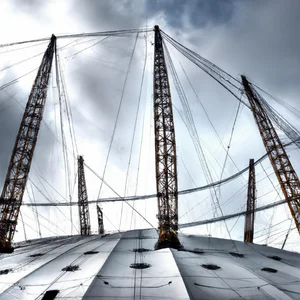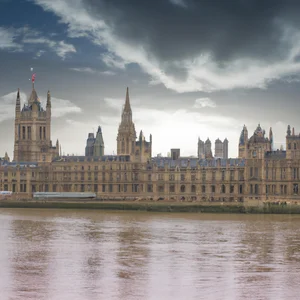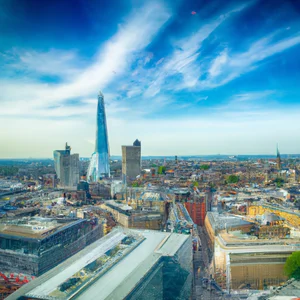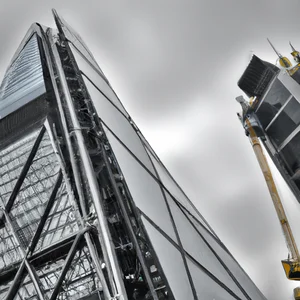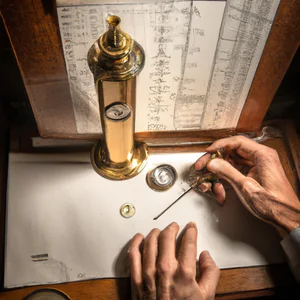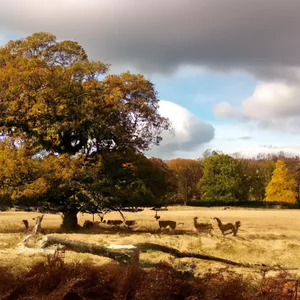Book your experience
Museum of London Docklands: the history of the Port of London and colonial trade
The Museum of London Docklands is a really fascinating place, if you think about it. It’s like a journey through time that takes you straight to the beating heart of London, where the port played a fundamental role in the history of the city. I tell you, the first time I went there, it felt like I was entering an old history book, with all those stories of trade and colonial adventures that give you goosebumps.
In short, the museum tells of how London became a colossus of trade, thanks to the docks and merchants who, between one voyage and another, brought goods from every corner of the world. It’s incredible to think that if it hadn’t been for those crowded ports, the city wouldn’t have been the same. Here, for example, I remember seeing old ships, and I imagined the sailors returning home after months at sea, with incredible stories to tell, as if they were real explorers.
Of course, not everything is rosy. I think the museum does a great job of showing the other side of the coin as well, like the slave trade and the consequences it had. It’s a part of the story that, while uncomfortable, is crucial to understanding the context. I mean, no story is complete without its ups and downs, right?
And then, there are interactive activities for the younger ones, which make everything even more engaging. If you have a son or daughter, it’s a great excuse to bring them and keep them entertained while they learn. Maybe while they tell you what they’ve learned, you can even pause and think about how far London has come since those days.
In summary, the Museum of London Docklands is a place I recommend you visit if you want to discover a bit of history, but in a way that doesn’t feel like just a boring book to read. It’s like a good film that keeps you glued to your seat, with images and stories that make you reflect and, why not, even a little emotional.
Museum of London Docklands: the story of the Port of London and colonial trade
The Port of London: beating hearts of commerce
Walking along the pier of the Museum of London Docklands, I had the opportunity to listen to the story of an elderly fisherman, who has plied the waters of the Thames for decades. In a nostalgic tone, he described how the port was a crossroads of cultures, goods and stories. * “Here, every surfboard has a story to tell,” * he said, as the sun set, painting the sky orange and pink. This personal anecdote made me reflect on how the Port of London has been, and continues to be, a beating heart of trade.
The Port of London is one of the most historic and influential ports in Europe, and its development has had a significant impact on the city’s economic and cultural growth. Today, the museum offers a fascinating overview of the trade routes that fueled the British Empire, exploring not only the goods exchanged, but also the people involved, from local workers to artisans from distant countries.
For those visiting the museum, it is important to know that the exhibitions are constantly updated and offer a wide range of events and workshops. A useful tip: check the official [Museum of London Docklands] website (https://www.museumoflondon.org.uk/museum-london-docklands) to find out about special events that may coincide with your visit, such as conferences or guided tours .
A little-known aspect of the port is the “Docks Plan,” an urban regeneration initiative that has transformed brownfield sites into vibrant, sustainable public spaces. This approach not only preserves historical heritage, but also promotes responsible tourism. Discovering this project will give you a new perspective on how the past can coexist with the future.
The cultural and historical impact of the port
The port is not just a place of exchange; it is a symbol of global interconnection. The stories of sailors, merchants and goods have shaped London’s identity, making the port an epicenter of innovation and multiculturalism. In the museum, you can explore how trade influenced not only the economy, but also art and culture, making London a mosaic of experiences and traditions.
Practical advice
If you want an immersive experience, take a guided boat tour along the Thames. This will allow you to see the historic docks and port structures up close, enriching your understanding of London’s maritime history.
Finally, it is important to dispel a common myth: many believe that the port is just a place of passage. In reality, it is an ecosystem full of life, where the past and present intertwine in a vibrant tale of resilience and transformation.
A final reflection
As I reflected on the stories that permeate the harbour, I asked myself: How many more untold stories lie beneath the surface of the Thames waters? You will visit the Museum of London Docklands with the intention of discovering not just the history, but the stories who continue to live in this extraordinary place?
Slave Stories: The Dark Side of the Trade
A personal memory
I vividly remember the time I visited the Museum of London, where a section is dedicated to slavery and the trade that passed through the Port of London. As I looked at the images and listened to the stories of men and women torn from their homelands, I felt overwhelmed by a sense of sadness and revelation. This is not just a dark chapter in British history; it is a fundamental piece of London’s cultural mosaic, which deserves to be told and understood.
Crucial historical context
The port of London, one of the beating hearts of trade in the 17th and 18th centuries, saw the passage of ships full of slaves. The Atlantic slave trade had a devastating impact on millions of lives. London has become rich thanks to this trade, but at what cost? According to London Histories, a local initiative, more than 35% of the city’s wealth during the colonial period came directly from slavery-related activities. It is essential to visit places like the Museum of London Docklands to fully understand how these stories have shaped not only the city, but also the entire world.
An insider tip
If you would like to explore this topic further, I recommend taking one of the guided tours offered by Black History Walks, where local historians tell forgotten stories and share unique perspectives on the contribution and impact of the African-British community in London. This approach is not only educational, but also offers a more nuanced and authentic view of the city’s history.
Cultural heritage
The slave trade had a lasting impact on London’s culture and British identity. African influences can be found in various aspects of London life, from music to cuisine to contemporary art. This cultural exchange, although the result of tragic circumstances, has enriched the city’s social and artistic landscape, creating a dialogue that continues to evolve.
Responsible tourism
When exploring these stories, it is essential to do so responsibly. Choosing to visit museums and participate in guided tours that promote historical awareness and education is one way to honor the victims of this history. Furthermore, some local organizations are working to promote sustainable tourism initiatives, contributing to projects that support communities affected by the history of slavery.
An experience not to be missed
Don’t miss the opportunity to visit Tate Modern, where exhibitions exploring the consequences of slavery through contemporary art are frequently held. These installations do not they only provoke reflection, but they also offer an opportunity to understand how the past influences the present.
Myths to dispel
A common misconception is that slavery was an isolated phenomenon, limited to a specific period in British history. In fact, its repercussions are still felt today. The history of slavery is a story of resilience and struggle that continues to influence contemporary discussions about race, identity, and social justice.
Final reflection
As you walk along the banks of the Thames, reflecting on these stories, we invite you to consider: how can we, today, honor the lives of those who have been unjustly deprived of their freedom and dignity? What is our role in creating a future that recognizes and respects these stories, contributing to a more just society?
Navigating Time: The Evolution of Docklands
A personal journey into the heart of transformation
I clearly remember my first visit to London’s Docklands. As I walked along the River Thames, the cool breeze carried with it the salty scent of the water. Around me, imposing glass and steel buildings stood like modern colossi, but what struck me most was the contrast with the remnants of an industrial past that appeared here and there. I began to explore this labyrinth of history and innovation, discovering that the Docklands are not only a commercial gateway, but also a stage for stories that span the centuries.
The evolution of Docklands: from commercial hub to cultural centre
The Docklands have been the beating heart of London’s maritime trade for decades, but over the last forty years they have undergone an extraordinary metamorphosis. The closure of commercial ports in the 1980s sparked an ambitious urban regeneration project, transforming industrial areas into vibrant residential and commercial districts. Today, Canary Wharf is synonymous with modernity and innovation, home to some of the world’s largest banks and corporations.
According to the London Docklands Development Corporation, the redevelopment project has led to increased employment and improved transport, making the area accessible via the Docklands Light Railway (DLR) and the London Underground.
Insider tip: Explore hidden channels
One of the Docklands’ best-kept secrets is the network of canals and bridges that wind through the neighborhood. An unconventional experience is to rent a bike and cycle along the River Thames Path, following the flow of the water. Here, you will be able to discover hidden and picturesque corners, far from the tourist frenzy. In particular, don’t miss Millwall Dock, a peaceful place where you can sit on a bench and watch the boats move gently on the water.
The historical and cultural impact
The evolution of the Docklands has had a significant impact not only on the local economy but also on the city’s culture. The redevelopment has attracted artists, designers and chefs, enriching the cultural and gastronomic offer of the neighborhood. Today, art galleries such as the Tate Modern and the Museum of London Docklands tell stories of a maritime past that cannot be forgotten.
Sustainability in the era of regeneration
In an age where sustainability is key, many projects in Docklands focus on eco-friendly practices. For example, Greenwich Peninsula was designed with a focus on the environment, promoting low-emission buildings and accessible green spaces. Taking part in eco tours or outdoor events in these areas can offer an opportunity to experience the beauty of the Docklands, whilst respecting nature.
Immerse yourself in the atmosphere
Walking along the canals, you can feel the vibrant energy of the neighborhood. The restaurants and bars that dot the area offer a range of dining experiences, from traditional taverns to modern cafés. I recommend stopping at Sushi Samba, where sushi meets Brazilian cuisine, all with a breathtaking view of the London skyline.
Address myths and misconceptions
Often, we tend to think that the Docklands are just a business area, overlooking the cultural and historical richness they offer. In fact, this neighborhood is a beacon of innovation and creativity, a place where the past and present intertwine in surprising ways.
A final reflection
As you immerse yourself in the history and modernity of Docklands, I invite you to consider: how can we, as visitors, contribute to the ongoing evolution of this space? Next time you explore this corner of London, consider how your visit can leave a positive impact on the local community. What stories will you take home, and how will these influence your perception of such a dynamic area?
Industrial architecture: treasures to discover
When I first set foot in London’s Docklands, I was struck by the majesty of the industrial structures dotting the landscape. Walking along the River Thames, I came across the Brunel Museum, an old shipyard that tells the story of naval engineering. As I explored, the scent of aged wood and the sound of flowing water transported me to another time. This place is not just a museum, but a silent witness to a London that was a global commercial hub, where ships transported goods and dreams.
Discover hidden treasures
London’s industrial architecture is a veritable treasure chest to explore. From historic Docks, like Canary Wharf, to elegant department stores that once housed tons of spices and textiles, every building tells a story. According to London’s tourist office, many of these buildings have been restored and transformed into public spaces, art galleries and restaurants, offering a perfect balance between past and present.
An insider tip
A little-known secret is that, in addition to traditional tours, it is possible to take part in guided architectural tours organized by Open House London, where local experts offer a unique perspective on the most iconic and lesser-known structures. Don’t forget to check their official website for dates, as these events only happen once a year.
The cultural impact of architecture
This architecture is not only a reflection of a bygone era, but has also shaped modern London culture. The transformations of the Docklands have brought an economic and social renaissance, influencing the way residents and tourists interact with the city. The redevelopment of these areas has made London an example of how industrial heritage can be integrated into contemporary life.
Sustainability and responsibility
Today, many restoration initiatives focus on sustainability, using eco-friendly materials and responsible building practices. It is possible to admire architectural works that not only respect the historical heritage, but also the environment. For example, Greenwich Peninsula is a cutting-edge project that aims to reduce environmental impact by offering green spaces and innovative energy solutions.
Live the experience
To fully experience the beauty of London’s industrial architecture, I recommend combining a walk along the river with a cruise. Several companies, such as Thames Clippers, offer tours that allow you to see these structures from a different perspective as you cruise along the Thames.
Myths and misconceptions
A common misconception is that industrial architecture is just a legacy of the past, meaningless in the modern context. In fact, these structures continue to inspire architects and designers contemporaries, demonstrating that history and innovation can coexist harmoniously.
Final reflection
As you explore the Docklands, take a moment to reflect: how can these structures tell a city’s story and shape the future? Next time you find yourself in front of a historic building, ask yourself what stories they might tell and how the past continues to influence London today.
Interactive museums: experiences that involve the visitor
A personal journey through the wonders of London’s museums
The first time I set foot in the Museum of London Docklands, I was greeted by a vibrant atmosphere, a mix of history and innovation. As I explored the interactive exhibits, one particular installation struck me: a full-scale reconstruction of an ancient pier, where visitors can walk and even “load” virtual goods. This immersive approach not only makes history more accessible, but allows us to experience the experiences of our ancestors with surprising freshness.
Museums that talk: an immersive experience
London offers a wide range of interactive museums, each with its own soul. In addition to the Museum of London Docklands, don’t miss the National Maritime Museum, where you can interact with historic ship models and even simulate sailing. These spaces not only preserve treasures from the past, but transform them into living experiences. According to Visit London, over 24 million people visit the capital’s museums annually, with the majority of them offering activities for all ages.
An insider tip
If you want a truly authentic experience, visit the Health & Safety Museum in Canary Wharf. This lesser-known museum hosts a series of interactive installations that chronicle the evolution of maritime security. It’s a hidden gem, away from the crowds, where you can learn through hands-on experiences and live demonstrations.
Learning from history
London’s interactive museums are not only learning spaces, but also custodians of collective memory. Through hands-on activities, visitors can understand the crucial role that maritime trade played in the city’s development. The stories of sailors, merchants and the cultural changes that shaped London are told in an engaging way, enriching our understanding of the present.
Sustainability in focus
Many of these museums have adopted sustainable practices. The Museum of London Docklands, for example, has implemented a recycling and waste reduction programme, encouraging visitors to take part in green initiatives. This way, while you explore the past, you can also contribute to a more sustainable future.
Immerse yourself in the atmosphere
Imagine walking along the docks of the Docklands, surrounded by historic merchant ships and the sounds of flying seagulls. The air is pervaded by the scent of the sea and the bright colors of the local markets. Every step brings you closer to a story, to a memory waiting to be discovered.
An unmissable activity
One experience I highly recommend is the maritime history workshop offered by the National Maritime Museum, where you can learn to build historic ship models. It’s a practical and engaging way to understand navigation techniques and materials used over time.
Myths to dispel
A common misconception is that museums are only for tourists. In fact, many Londoners regularly visit these institutions for special events and temporary exhibitions. Don’t be afraid to immerse yourself in these experiences, even if you’re a resident!
Final reflection
What story fascinates you most? London’s interactive museums not only offer a learning opportunity, but also invite reflection on our roots and how the past impacts the present. Have you ever wondered how yesterday’s stories can influence today’s decisions?
A journey through flavours: local cuisine to try
A personal experience in the culinary heart of London
I still remember my first visit to a Docklands market, surrounded by the scents of spices and freshly cooked dishes. While I was walking among the stalls, a street food vendor invited me to try jollof rice, a spicy rice dish typical of Nigerian cuisine. The combination of tomato, peppers and local spices was an explosion of flavors that immediately made me feel part of that vibrant, multicultural community. That day marked the beginning of a lasting love for Docklands cuisine, a place where every dish tells a story.
Practical information on local flavors
Today, Docklands is a true gastronomic paradise, where culinary influences from around the world mix to create unique experiences. Among the places not to be missed, the Surrey Docks Farm offers not only excellent fresh produce, but also cooking classes that will allow you to deepen your knowledge of local culinary traditions. Don’t forget to visit Billingsgate Fish Market, London’s largest fish market, where fresh fish takes center stage and morning auctions offer an immersive experience.
Unconventional advice
If you want an authentic taste of local cuisine, I recommend taking a food tour led by a resident. Not only will you have the chance to try typical dishes, but also to discover restaurants and kiosks that you wouldn’t find in tourist guides. An excellent choice is the food tour organized by Eating Europe, which will take you through lesser-known neighborhoods but rich in culture and culinary tradition.
The cultural impact of Docklands cuisine
Docklands cuisine is a reflection of its history: a crossroads of cultures, where immigration has brought flavors and traditions from every corner of the world. This culinary melting pot not only enriches the gastronomic offer, but also creates links between different communities, promoting a sense of belonging and sharing.
Sustainable tourism practices
In recent years, many Docklands restaurants and markets have embraced sustainable practices, using local and organic ingredients. For example, Borough Market, although not located in Docklands, is a great example of how the community can work together to promote responsible eating. Choosing to eat in restaurants that source from local producers is a way to support the local economy and reduce environmental impact.
Immerse yourself in local flavors
Imagine walking along the River Thames, with the sun dipping towards the horizon, enjoying crunchy fish and chips from a kiosk. The atmosphere is lively, the sounds of the markets mix with the laughter of people enjoying the evening. This is the power of Docklands cuisine: it’s not just food, it’s an experience that nourishes the body and soul.
Activities to try
For an unforgettable dining experience, book dinner at The Oystermen Seafood Bar in Covent Garden, where you can savor fresh oysters and passionately prepared seafood dishes. Or take part in a cooking workshop at the London Cooking Project, where you will learn to prepare typical dishes with fresh, local ingredients.
Myths and misconceptions
A common misconception is that London cuisine is dull or uninteresting. In fact, Docklands offers a variety of dishes that reflect the cultural diversity of the city. From Ethiopian to Caribbean cuisine, each dish has a unique story to tell.
Personal reflection
As you explore the flavors of Docklands, I invite you to reflect on how food can bring people together and tell stories of different cultures. Which flavors struck you the most during your travels? Which dish made you feel closer to a new community? Cooking isn’t just nourishment, it’s a bridge between worlds, and in Docklands, this bridge is more accessible than ever.
Sustainability at the Museum: a responsible approach
A personal experience
I remember my first trip to the Greenwich Maritime Museum, where the salty air mixed with the scent of ancient stories. As I walked through the exhibits, a passionate guide told me about how the museum is embracing sustainable practices, not only in the conservation of works, but also in engaging visitors. This approach made me reflect on how much the way we travel can influence the world around us.
Practical information
Today, the Greenwich Maritime Museum, a major landmark of the Port of London, has implemented various programs to promote sustainability. Among the initiatives are exhibitions dedicated to ocean conservation and the impact of climate change. According to Visit London, the museum has reduced its energy consumption by 30% in recent years, a significant achievement for such a large institution.
Unconventional advice
If you want a truly unique experience, take part in one of their organized eco-tours. These tours will not only take you behind the scenes of the museum’s sustainable management, but will also give you the opportunity to meet the curators and discover secrets that have never been revealed to the public.
The cultural and historical impact
Sustainability at the Maritime Museum is not just a matter of modern practices; it is a call to reflect on the historical legacy of maritime trade and its impact on the environment. The history of the Port of London is inextricably linked to the evolution of trade routes and the resulting environmental changes. In this context, the museum’s sustainable activities represent a step towards collective responsibility.
Sustainable tourism practices
The museum encourages visitors to use environmentally friendly means of transport, such as bicycles or public transport. Additionally, the restaurants within the facility offer local and organic foods, reducing environmental impact and supporting the local economy.
Engaging atmosphere
As you explore the galleries, let yourself be enveloped by the history that permeates every corner. The ships on display tell stories of adventures and discoveries, but also of challenges related to the environment. The light that filters through the windows, reflecting the blue of the water, creates an almost magical atmosphere, in which the past and the future coexist.
An activity worth trying
Don’t miss the chance to attend a sustainability workshop, where you can learn how to reduce your environmental impact while enjoying the beauty of maritime heritage. These experiences are not only educational, but also fun and engaging.
Myths to dispel
A common misconception is that sustainability is just a fad in the museum sector. In fact, many historic institutions, such as the Maritime Museum, are integrating sustainable practices into their long-term mission, demonstrating that respect for the environment is a shared responsibility.
Final reflection
As you leave the Maritime Museum, ask yourself: How can I contribute to more sustainable tourism in my daily life? Every choice, no matter how small, can make a difference and help protect the treasures of our past and our future. Next time you visit the Port of London, remember that every step towards sustainability is a step towards greater collective responsibility.
Historical curiosities: the role of women in commerce
A journey through time through forgotten stories
As we explore the wonders of the Museum of London Docklands, one story in particular rings in my ears, like the sound of a rudder creaking in the wind. During a visit, I discovered that women played a vital role in London’s trade, but their stories were often overlooked. Imagine being in an 18th-century market, where women not only ran the sales, but were also skilled entrepreneurs, traders and weavers, contributing significantly to the port’s thriving economy.
An invisible legacy
Women, especially those from lower social classes, worked tirelessly in the Docklands, contributing to the trade of products such as fish, timber and spices. This aspect of trade is not just an intricate labyrinth of numbers and goods, but a real network of relationships, where women found themselves intertwining commercial and social ties that would influence the very fabric of London society. Their stories tell us about resilience and innovation, essential elements for understanding London today.
A surprising curiosity
A little known anecdote is that many of these women were also involved in sailing. Several women, such as the “capatine” (the women who managed the ships’ supplies), were on board the boats, where they took care not only of logistics, but also of relations with sailors and merchants. This often overlooked role demonstrates how trade was a battleground of skill and cunning, where women skillfully navigated the waves of the market.
Modern reflections
In an era where issues of gender and equality occupy a central place in social debate, the recognition of women’s contribution to historical commerce invites us to reflect on how today’s dynamics may be influenced by this legacy. Even today, many women are leaders in business and entrepreneurship, proving that history is a cycle that repeats itself.
Sustainability and responsibility
The Museum of London Docklands not only tells these stories, but is also committed to preserving cultural heritage through sustainable tourism practices. Visiting the museum is an opportunity to reflect on history while supporting an institution that promotes education and cultural preservation.
An experience not to be missed
I recommend taking one of the guided tours dedicated to trade and women in the Docklands. These tours offer a unique opportunity to hear fascinating stories and discover how women have helped shape London. Don’t forget to visit the section dedicated to women’s stories in the museum, where you can learn more about their experiences.
Final reflections
Many tend to think of the Port of London as a place dominated by men and goods, but this view is incomplete. The history of women in commerce is a testament to strength and determination. I invite you to reflect: What other forgotten stories might emerge if we only took the time to listen?
Local events: parties and celebrations not to be missed
When I think about the Museum of London Docklands, one of the experiences that stood out to me was my visit during the Docklands Festival, an annual celebration that brings together community, art and culture. There is nothing more fascinating than seeing the museum transform into a vibrant stage, where local stories and traditions come to life, creating an atmosphere that envelops you like a warm blanket on a rainy day.
An experience not to be missed
During the festival, I had the opportunity to attend dance performances, concerts and even local craft demonstrations. I remember seeing a group of dancers interpreting the history of the port with movements that seemed to tell the challenges and victories of those who lived in this area. It was a pure moment magic, which made me feel part of something much bigger.
If you are visiting London during the summer months, I recommend checking the calendar of events at the museum. Not only is the Docklands Festival a great chance to immerse yourself in local culture, but you may also discover special events such as temporary exhibitions or themed nights that offer a fresh and engaging take on the port’s history.
An insider tip
A trick that few people know is to arrive a little early to the event to participate in free interactive workshops. These activities not only enrich your experience, but also give you the chance to interact with local artists and historians, who can share fascinating anecdotes that you wouldn’t find in books.
The cultural impact of the port
The Port of London is not just a place of trade; it is a crossroads of cultures and traditions. Every celebration that takes place here tells stories of people, their origins and their experiences. These festivities offer a unique insight into how the trade shaped not only London, but also the lives of those who participated in it.
Sustainability and responsibility
In an age where sustainability is crucial, many of the celebrations at the Museum of London Docklands are adopting eco-friendly practices. From reducing waste to using recycled materials for decorations, the museum is doing its part to ensure the holidays not only celebrate the past, but also respect the future.
An invitation to explore
If you’re in London, don’t miss the chance to attend local events at the Museum of London Docklands. Each celebration is an opportunity to discover, not only the history of the port, but also the communities that animate it. When was the last time you attended an event that made you feel deeply connected to a culture or history? Let yourself be carried away by the magic of Docklands and discover how the past can illuminate your present.
An unconventional tour: explore on foot and by boat
A personal experience
I still remember the moment when, walking along the banks of the Thames, I decided to venture on a tour that combined discovery on foot and by boat. As I walked along the Thames Path, the sound of the waves gently crashing against the boat sailing alongside me created an almost magical atmosphere. This experience allowed me to appreciate London from a new angle, discovering hidden corners and fascinating stories that are intertwined with the course of this great river.
Practical information
Today, there are numerous options for exploring the Port of London, and many of them offer a mix of scenic walks and boat trips. One of the most recommended tours is the one organized by Thames Clippers, who offer cruises departing from various points along the river, such as Westminster Pier and Greenwich. For those who want a more intimate experience, the London Waterbus Company offers a service that connects the attractions along the Regent’s Canal, allowing you to discover the beauty of the area in an alternative way.
An insider tip
A little-known tip is to bring a pair of binoculars with you. Not only to admire the architectural details of the wonders along the route, but also to observe the wildlife that populates the river. During cruises, I spotted herons and ducks moving elegantly among the boats. This small precaution can significantly enrich the experience!
Cultural and historical impact
The combination of exploration on foot and by boat is not only a fun way to discover London; it is also a journey through its history. Historic wharves and docks, once the hub of commerce, tell stories of great ships, merchants and social change. Every step along the Docklands is a reminder of the past, an invitation to reflect on how the city has evolved from a commercial port to a modern metropolis.
Sustainability and responsible tourism
In an age where sustainability is key, many of the river tour companies are adopting eco-friendly practices. For example, Thames Clippers uses environmentally friendly boats and promotes the use of recyclable materials. Choosing these options not only enriches your experience, but also helps preserve the beauty of London for future generations.
Vivid atmosphere
Imagine walking along the Thames Path, the scent of the river mixed with that of the local markets, as the sun sets on the horizon and golden reflections dance on the water. Every corner brings with it a vibrant atmosphere, made up of stories and colors that make London unique. The transition from land to water offers a fascinating perspective and makes you feel like an integral part of this ever-changing city.
Suggested experience
For an unforgettable experience, join a tour with London Walks, which offers themed riverside walks with expert guides. Not only will you discover the history of the port, but you will also have the opportunity to enjoy local delicacies in some of the historic taverns along the way.
Myths and misconceptions
A common misconception is that river exploration is only for tourists. In fact, many Londoners take these tours to relax and enjoy the beauty of their city from a new perspective. It’s a way to rediscover familiar places in a different light.
Final reflection
Next time you’re in the heart of London, why not consider a walking and boat tour? It could offer you a new perspective on the city and help you rediscover its beauty, history and culture. We invite you to reflect: what stories does London tell you when you observe it from the river?

 Architecture and Design
Architecture and Design Cities and Regions
Cities and Regions Culture and History
Culture and History Events and Festivals
Events and Festivals Fashion and Shopping
Fashion and Shopping Food and Wine
Food and Wine Nature and Adventure
Nature and Adventure Unique Experiences
Unique Experiences



















